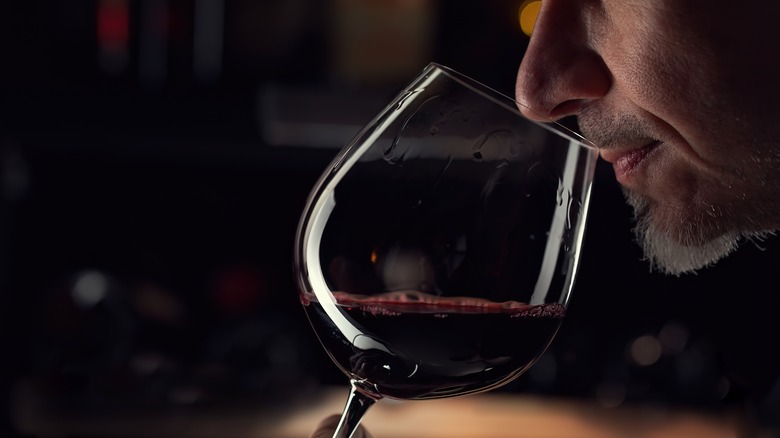Here's What Wine Sommeliers Mean When They Say Pencil Shavings
Master sommeliers take one of the hardest examinations in the world to learn to identify wines, select bottles, and guide others on what to drink. You don't need to be a certified professional to appreciate a decent-tasting glass, but the training sommeliers have gone through can help us match blends with dishes and buy quality bottles from the store.
A wine-tasting experience is impacted by smell. Instead of saying smell, however, oenophiles will reference a wine's nose or bouquet. The descriptors used when labeling a wine's nose can help drinkers understand what they will taste before the first sip. Adjectives can range from graphite to grass and can apply to both the flavor and aroma of the wine. The sense of smell is very much linked to memory and even subtle whiffs can transport you to days gone by.
While floral and smokey notes may be more well-known markers for alcohol, other labels can equally describe the bouquets and palates of different blends. Cut grass is one of those easily understood experiences, and the smell might bring you back to warm summer days. Pencil shavings is a similar term that is nearly universally recognized. If you remember the days of sharpening pencils in school, you may also recall the accompanying smell of wood. Describing wine with the term "pencil shavings" can indicate elements of cedar or other oaky, woodsy smells that could be found in a forest.
Expand your vino-related vocabulary
Woodsy notes that bring to mind pencil lead or pencil shavings can stem from the tannins present in a glass of wine or how the wine has been aged. If you've tasted Bourdeaux, you may recognize the spicy, woodsy elements from a wine aged in oak barrels. The soil's mineral content can impart unique flavors described as steel, while climate can also impact a wine's minerality. "Pencil lead" is used to describe tastes that lean in this mineral direction.
When trying wines, feel free to expand your vocabulary beyond the usual notes of chocolate and berries. At your next wine-tasting party, encourage friends to detect differences between varieties and pinpoint less commonly described flavors. Compare notes with friends and contrast reviews with what is written on the wine bottles. Merlot wines can present a woodsy scent that pencil shavings can be used as an apt descriptor. Petrol and tar can describe some rieslings and darker wines like Nebbiolo. If, however, you fail to come up with any adjectives beyond honey or melon when describing a glass of white or can only detect spicy, peppery bouquets while sampling a zinfandel, don't panic. Wine tasting is a practice that can be developed over time. Enjoy the journey.

